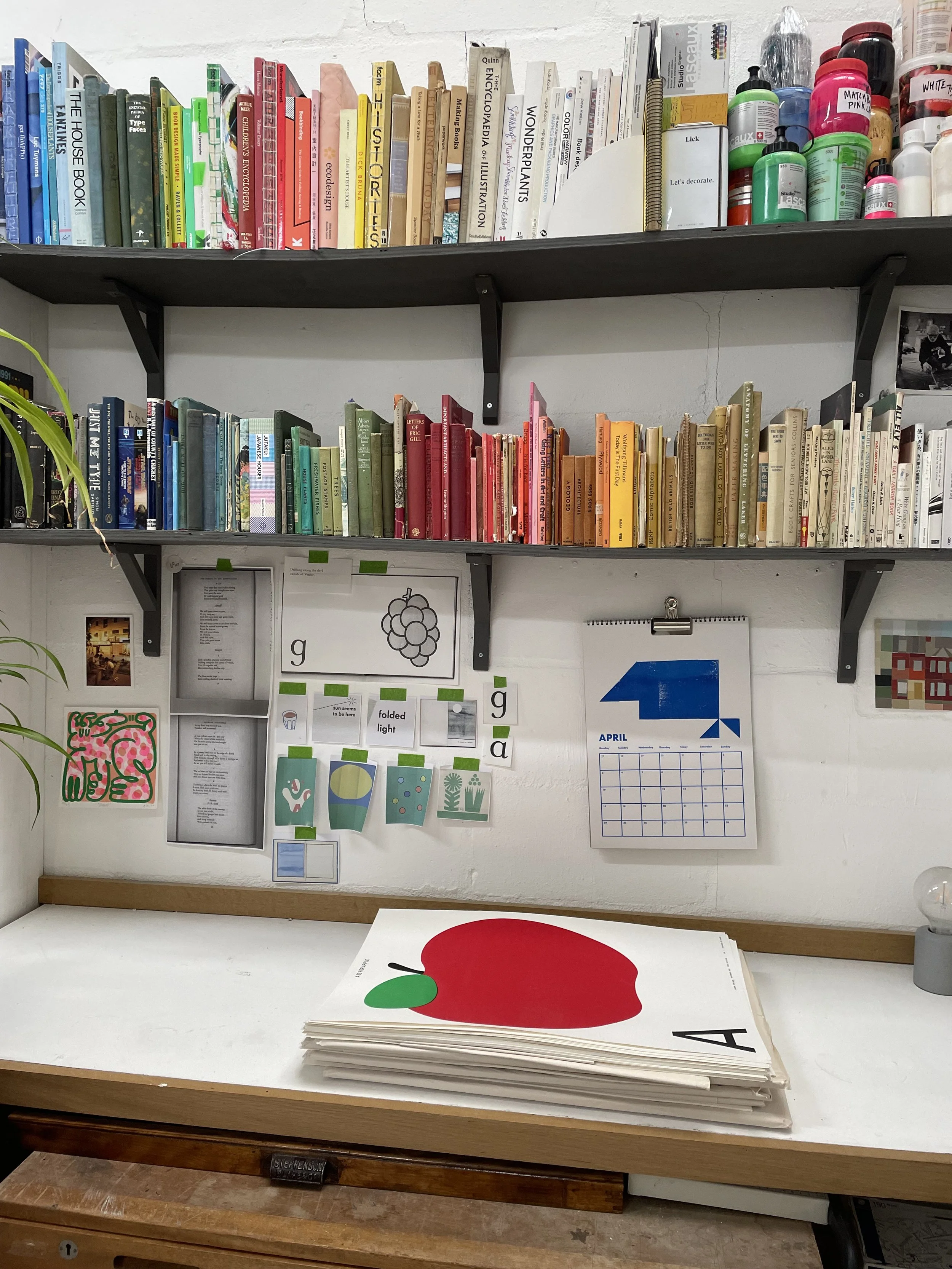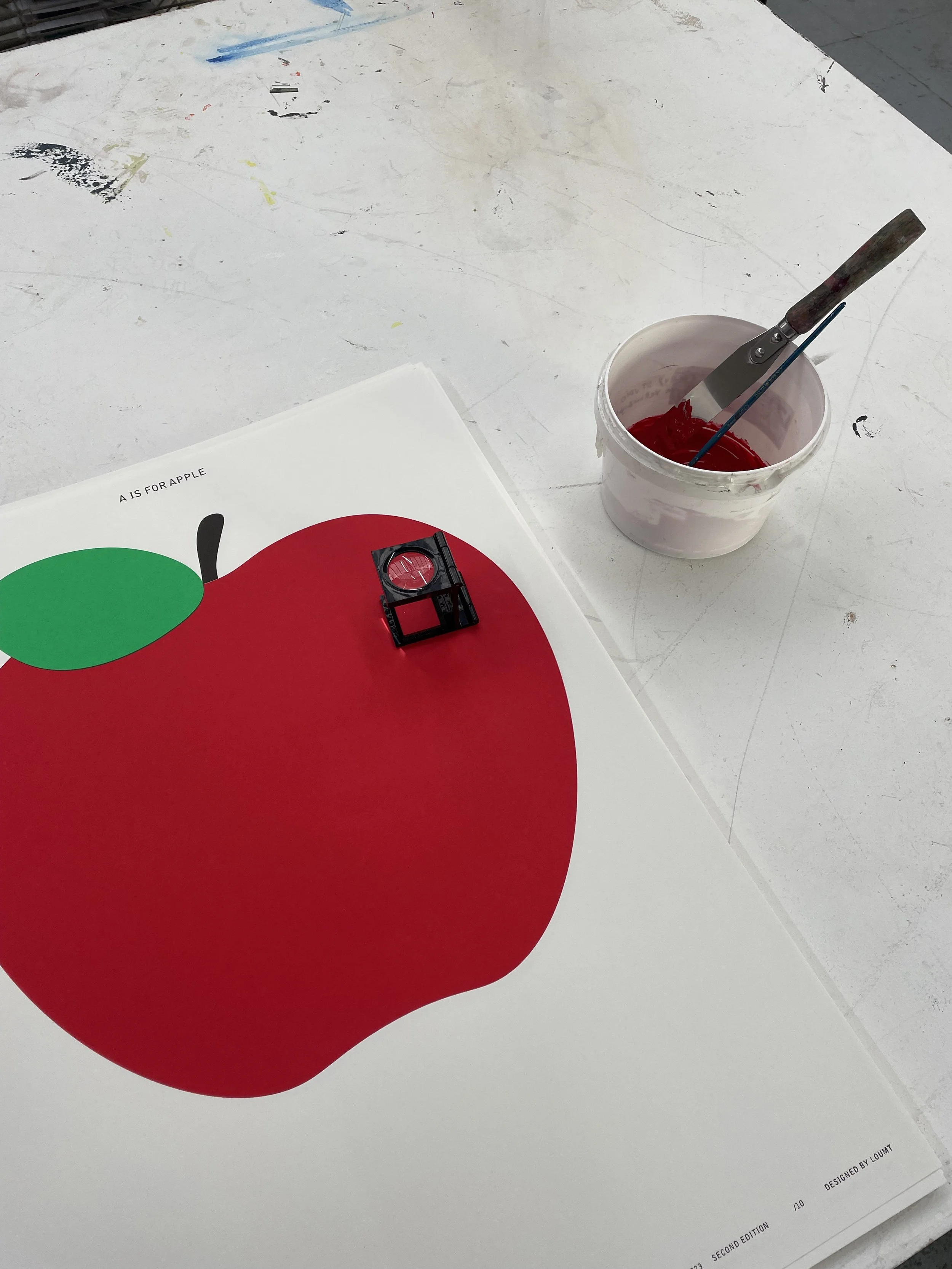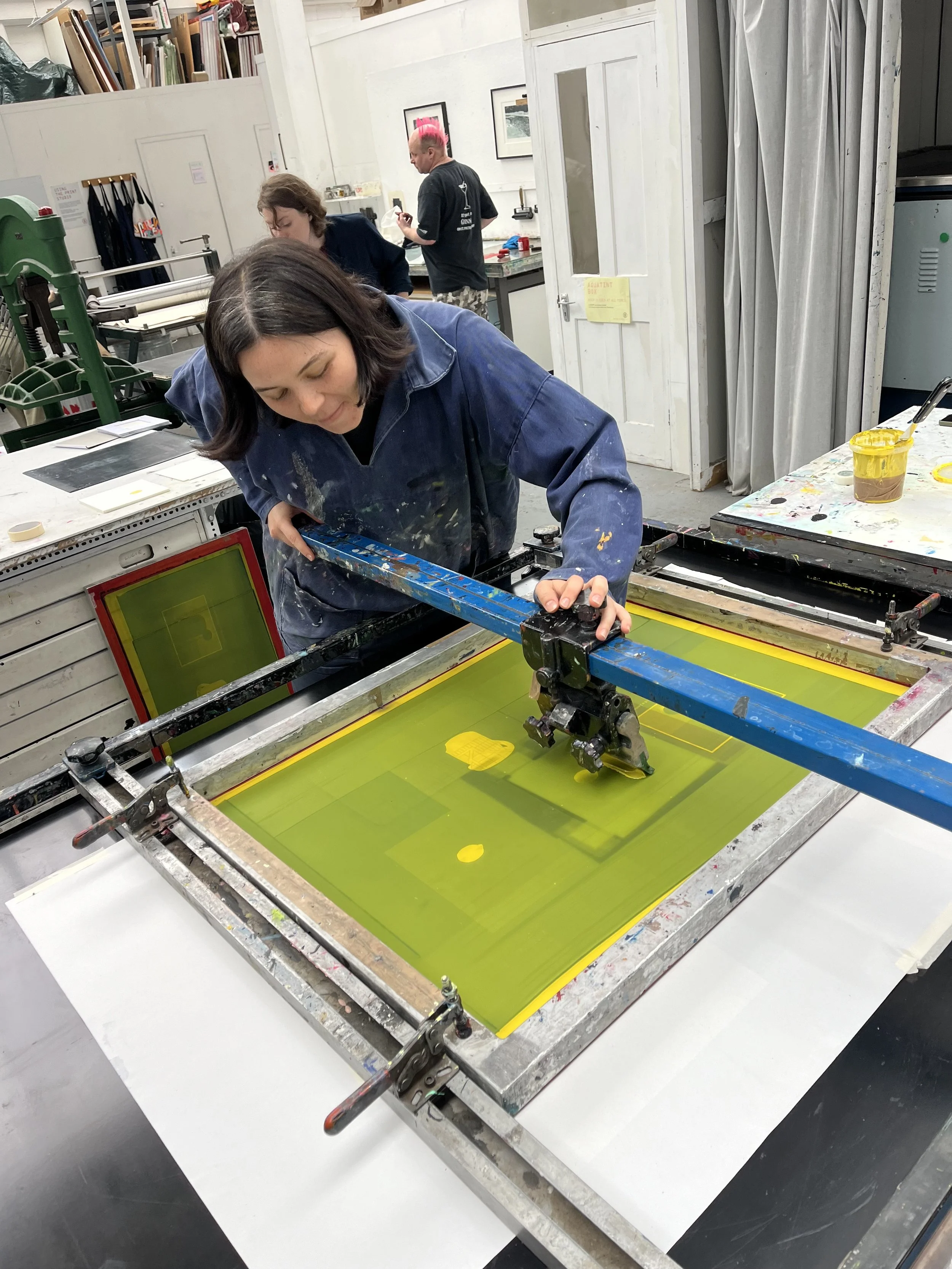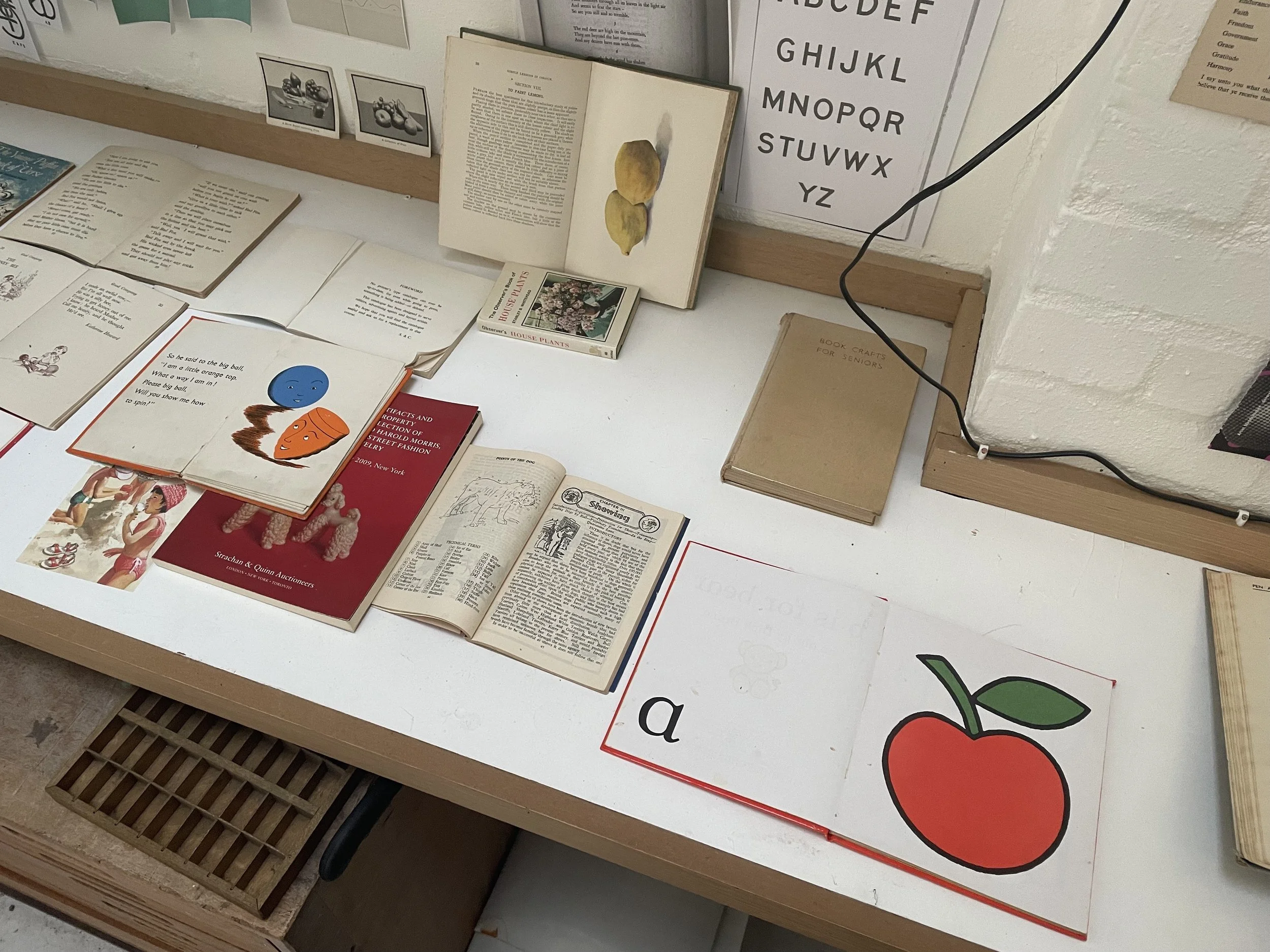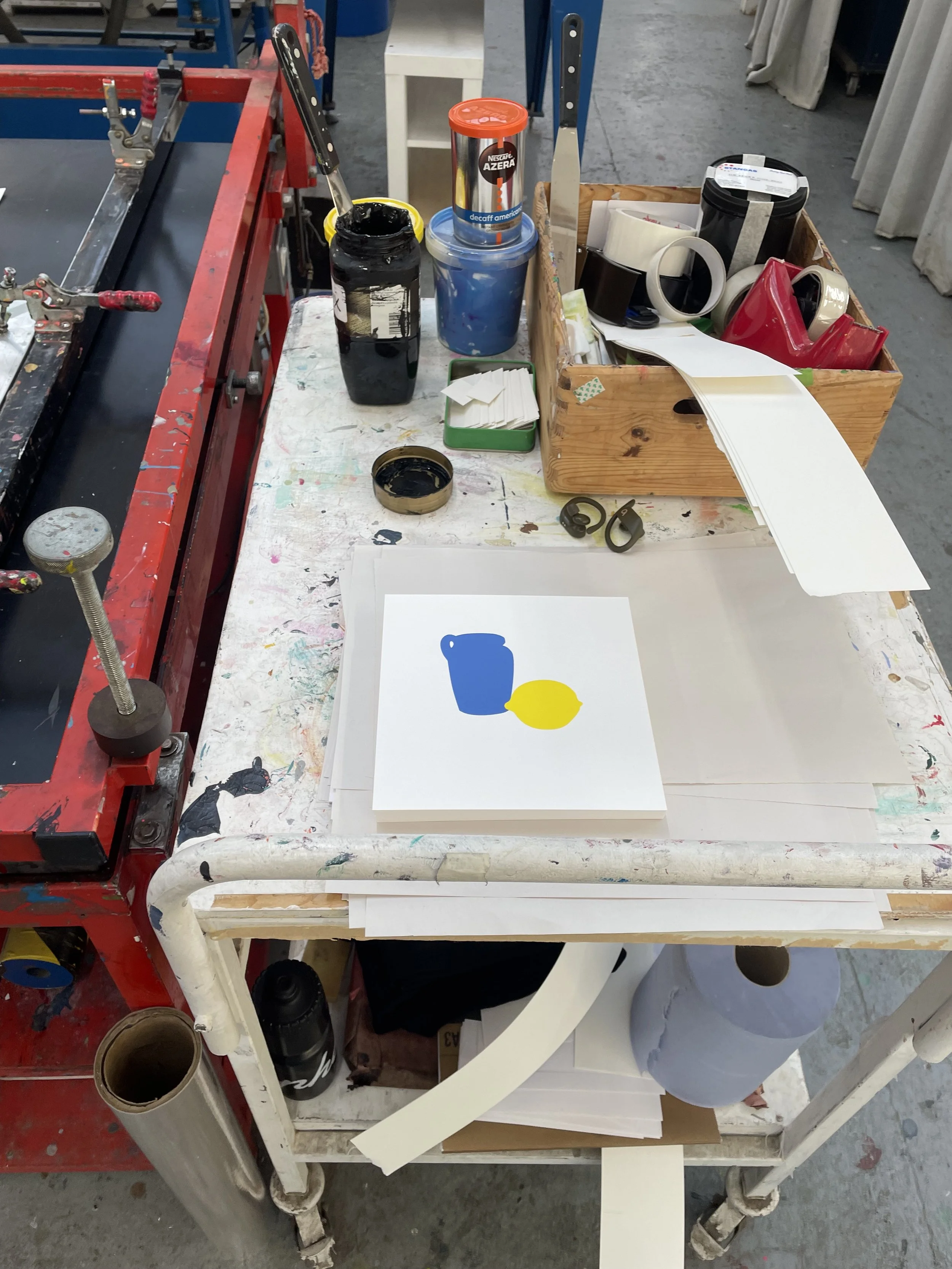BROCKLEY OPEN STUDIO x LOUMT x SIMPLE SHAPE
SAT 6th & SUN 7th JULY
1pm - 6pm
The annual Brockley Open Studio event is one of my favourite fixtures in the calendar. The weather is always great*, the streets are busy with people popping in and out of the houses and venues in the neighbourhood looking at art in all its forms; fine art, painting, illustration, drawing, ceramics, photography, etchings, stained glass, cabinetry, glass and metal work…I’m sure I have forgotten some, the list of disciplines included is long!
This year I am brimming with excitement to have Lucy Morris-Thomas, founder of LOUMT, exhibiting in the Simple Shape Studio-Shop. Lucy is a screenprinter and makes bold graphic work inspired by children’s learning and alphabet books. Not only will she be showing her work but she will be demonstrating her screen printing techniques too. Read on below for our Q & A with Lucy.
We will also have work on show from artist, friend and neighbour Mimi Soan. Her playful approach to her work sees a unique relationship between the real and the imagined, the human world and the animal world. It is a fanciful playground.
Come along, hang out, look at and buy art, watch the demonstrations, ask lots of questions PLUS shop for hand made and crafted homewares in the Simple Shape Shop too!
(*a risky statement, but I refuse to have my optimism dampened!)
Please tell us what Loumt is all about, and is there a story behind the name?
LOUMT is a studio I created during my study at Kingston University in Graphic Design. LOU is the nickname my friends call me; while MT is the initials of my last name. Together they represent me and the work I'm interested in exploring.
To think I would even read a book was an unimaginable thought for me as a child with dyslexia. I’ve always wanted to tackle this head-on and now find myself becoming fully immersed by each book I read and pick up. I am obsessive about looking for and buying books to learn more about paper stock, margins, binding, etc. With this growing curiosity I taught myself how to bookbind while in my second year at Kingston. I am driven to understand how each designer/maker communicates ideas to their readers so I can better understand the feeling they are trying to evoke.
To explore this, I’ve curated my own reference library full of inspiring and juicy books on an array of subject matters. My current influences and inspiration come from mid-century graphic design and children’s books. I think this relates to my struggle with dyslexia.
Mid-century books tend to take on a highly conceptual approach to design resulting in simple, to-the-point graphics. I have a particular interest in Dick Bruna’s illustrative book covers and children’s books. This has led to some of my more recent works using screen printing methods, in particular my alphabet poster series. Artists’ books are another huge interest of mine. While writing my dissertation, titled ‘Self-reflection and reflexivity in artists’ books’, I discovered the use of books as an art form. These projects are experimental, conceptual and niche. This can be seen in the work of Micah Lexier, another artist I’m highly influenced by. He works with archived materials as well as creating rudimentary images and objects using; numbers, letters, shapes and diagrams. I am drawn to the use of these materials as subject matter to form a connection with me as a viewer
Lucy Morris-Thomas, founder of LOUMT, in her studio
We adore your alphabet prints and notice that you’ve chosen not to follow alphabetical order, is there a plan to finish the whole alphabet?
The alphabet prints grew from an obsession with apples. I started collecting apple objects, printed matter, photographs, and books all about apples and I decided to research more into my fascination with this. It wasn't long before I saw the relationship between children's alphabet books and my love for apples. Each of the books started A is for Apple and it reminded me that without these learning aids as a dyslexic child, the alphabet would be hard to learn. From there I wanted to design my own illustrations to challenge my practice and create a piece of work which could become a larger project as I start exploring what images to create for the whole alphabet. So yes! I do plan to finish the whole alphabet.
Can you tell us the process of creating your prints?
Screen printing is a lot of trial and error but that's what makes it fun. I start by brainstorming what object I want to represent for whatever letter I am working on. To do this I usually discuss with friends or think about objects which mean something to me. From there I will start to work in Illustrator to create either a flat image or a slightly angled image depending on the object (The domino was angled whereas the apple is flat.) This process is where I spend a lot of time messing around with the shapes and building out the layers for the print. From there, I have to think about colour and the order in which I'm going to print. (light colours are usually first). Once all the computer part is done I have to print off the positives. These are printed on an A1 printer which feeds transparent film through the printer and prints the positives in pure black. Next, I have to prepare the screens. To do this I 'flood' a couple of A1 silk screens with emulsion. This is a chemical which allows the image to be exposed to the screen using UV light. From there you can then begin the process of printing. I have registration marks on each of the exposed screens so I know how to align the different layers for each colour.
Where do you draw inspiration?
A lot of my inspiration comes from books that I've collected as well as my very artistic family. My dad has so many interesting bits of bric-a-brac that I often wander into his studio to look for objects that I find interesting. Being in the studio space also gives me a lot of inspiration because I’m constantly surrounded by other interesting minds who think in a similar way. Having crits and discussions with other designers gets my creative juices flowing.
What lessons have you learnt from being a designer and printmaker?
I've learnt that mistakes are a chance to improve your skills. I've had to ask a myriad of questions and not be afraid to ask them.
Being a designer a lot of the work I do is commercial so that I can afford to survive in this world. Being a printmaker on the other hand has given me an opportunity to play and have fun.
Tell us something surprising about you
Something surprising about me might be that I originally studied Fashion Design and Communication at university.
AND, I bake sourdough in my spare time PLUS I play netball for a team in the North West Kent league.
What’s next for Loumt?
A new collection of 20x20 prints of still lives! I also want to start screenprinting my own books.

